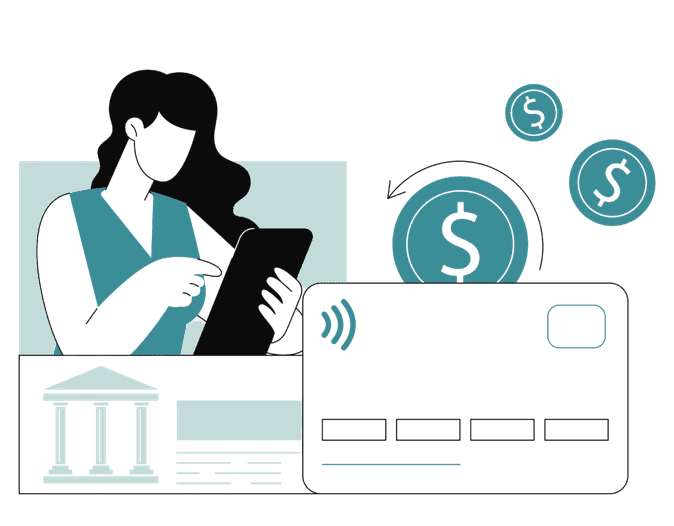
One of the biggest headaches for business owners is chargebacks, and it’s significantly worse for high-risk businesses like kratom or peptides. When your business is already labeled high-risk, you can’t afford any problems with your payment processor, and chargebacks are just one of the most common reasons enterprises get dropped from mainstream services.
To help your high-risk business grow, we will explain chargebacks, how they affect businesses, and what you can do to stop them.
What are Chargebacks?
A chargeback occurs when a customer disputes a transaction, prompting the bank to reverse the payment. This happens often when young kids have full access to their parents’ online accounts and buy video game content without their parents’ consent. While chargebacks are a great way to protect consumers, they often lead to financial losses and reputational damage for businesses.
In 2023, Mastercard reported that chargeback losses reached $117.47 billion, with confusing or misunderstood billing descriptors being the most common reason. The growing number of chargebacks underscores the substantial economic impact on merchants.
Reports suggest merchants spend about $191 on chargebacks, including fees, lost merchandise, and administrative expenses. The average chargeback rate across industries is approximately 0.6%, meaning 6 out of every 1,000 transactions result in a chargeback.
Payment processors label businesses at higher risk for chargebacks, making it difficult for merchants to find credit card processing for their businesses.
Common Reasons for Chargebacks
The most common reasons for chargebacks in high-risk industries are unclear billing descriptors, fraudulent transactions, or “friendly fraud.”
Unclear billing description chargebacks occur when consumers look at their bank statements and do not recognize the merchant listed. Many businesses don’t have any idea what they might look like on a list of transactions, so it’s essential to keep that in mind when working with a high-risk merchant account.
Fraudulent transactions are exactly what they sound like: Someone steals your information, places an order, and when you find out, you contact the processor and get a fraud chargeback.
The third reason is something called “friendly fraud.” It constitutes both of the above and accounts for about 70% of all credit card fraud, costing the industry over $132 billion a year. Sometimes, it’s genuine that the unclear billing description is something they ordered but can’t recognize, or if an unauthorized user in the household charges to the account, that isn’t allowed to make charges.
Other times, it’s buyer-regret. Some credit card processors have “zero-liability policies so that cardholders are not liable for unauthorized purchases,” which means a chargeback will be issued unless it can be proven that the charge is legitimate.
The Impact of Excessive Chargebacks
Every time a chargeback occurs on your merchant account, your finances and reputation are hit.
The higher your chargeback rate, the more likely you will see an increase in processing fees, account suspensions, and, in worst-case scenarios, termination by payment processors.
Maintaining a chargeback ratio below 1% for high-risk industries is crucial to avoid these penalties. Each processor has a different formula for accepting fraud rates, so you must prevent chargebacks as much as possible.
Best Practices to Prevent Chargebacks
Because of the heavy financial losses that affect businesses every year as a result of chargebacks and the additional risks faced by high-risk merchants, here are some of the best practices you can instill to prevent chargebacks from occurring:
- Detailed product descriptions to avoid ‘product not as described’ claims.
- Easy-to-find terms of service, refund, and return policies.
- Fast response times and resolving disputes before they escalate.
- Automated order confirmations and shipping notifications.
- Billing Clarity & Descriptor Optimization to ensure customers recognize transactions on their statements.
- Flexible Refund Policies
While offering flexible refund policies may sound counterintuitive, reacting proactively before disputes escalate into chargebacks significantly reduces the adverse effects on your merchant account.
Companies that provide straightforward and hassle-free refund policies experience a measurable decrease in chargebacks. Customers are more likely to seek a refund than initiate a dispute, so fewer chargebacks mean a lower chargeback ratio, keeping you in the good graces of your merchant account provider.
Fraud Prevention for Merchants
To safeguard your business from the damages of chargebacks, you must adopt technology and strategies to reduce their incidence.
The first suggestion is to utilize AVS and CVV matching. This helps verify that the provided billing address and card security code match the information on file with the card issuer, reducing the likelihood of fraudulent transactions and ensuring the customer is the legitimate cardholder.
Implementing 3D Secure protocols, such as Visa Secure or Mastercard Identity Check, adds an extra layer of authentication. Customers are prompted to enter a password or a code sent to their device, confirming their identity before the transaction is approved.
High-value orders from new customers, multiple orders in a short timeframe, or discrepancies between billing and shipping addresses can indicate fraudulent activity. Establishing criteria to flag such transactions for further review is essential for your business.
Enrolling in chargeback alert programs allows merchants to address disputes promptly, potentially preventing chargebacks.
Partnering with a payment processor specializing in high-risk industries can help prevent fraud and keep your business running.
What to Do If You Get a Chargeback
Chargebacks can be frustrating and costly, but businesses have options to dispute them effectively. A proactive approach helps limit the financial and reputational impact of a chargeback.
Steps to Dispute Chargebacks Effectively
- Respond quickly -most payment processors allow only 30-45 days to respond to a chargeback.
- Review chargeback reason codes – Each card network (Visa, Mastercard, etc.) has specific codes explaining why a chargeback occurred.
- Gather supporting documentation – This includes invoices, shipping confirmations, proof of delivery, and customer communication records.
- Submit a rebuttal letter – A well-structured response with strong evidence increases the chances of winning the case. You must keep detailed records, including transaction logs, signed delivery receipts, and clear product descriptions.
- Follow the payment processor’s guidelines – Each processor has specific requirements for submitting chargeback disputes.
Services like Verifi’s Chargeback Dispute Resolution Network (CDRN) and Ethoca Alerts notify merchants in real-time, allowing them to resolve disputes before they turn into chargebacks.
We also recommend working with a high-risk merchant account provider. Since many businesses are considered high-risk, partnering with a provider specializing in chargeback mitigation helps maintain a stable payment processing environment.
Rapid Dispute Resolution
Rapid Dispute Resolution (RDR) is an automated dispute management system that proactively resolves transaction disputes before they escalate into chargebacks.
This service allows merchants to set predefined rules for automatically refunding or resolving disputes before chargebacks. By initiating rapid dispute resolutions, businesses can significantly lower chargeback ratios.
RDR intercepts disputes as soon as a cardholder’s bank initiates them. Then, instead of allowing the chargeback process to proceed, the system applies merchant-defined rules to determine whether the dispute should be accepted or challenged.
If the merchant has opted to automatically refund specific disputes (e.g., transactions under a certain amount), RDR processes the refund instantly, preventing the chargeback from ever occurring.
Most payment processors utilize rapid dispute resolution to limit chargebacks, making them less of an issue than ever before.
How Limitless Payment Solutions Helps Merchants
Due to high chargeback rates and industry regulations, businesses identified as high-risk face unique challenges in securing reliable payment processing.
Limitless Payment Solutions provides tailored financial solutions to ensure merchants can accept payments securely and efficiently while reducing fraud and chargeback risks.
Our services include:
- 24/7 U.S. Based Custom Service
- $0 Set-up Fees
- Fast Funding
- 99% Account Approval Rate
- Chargeback Protection Programs
Operate your business confidently, knowing you have the tools and support to protect your revenue and grow your business.
Contact Limitless Payment Solutions today to safeguard your business with a secure, reliable merchant account.

